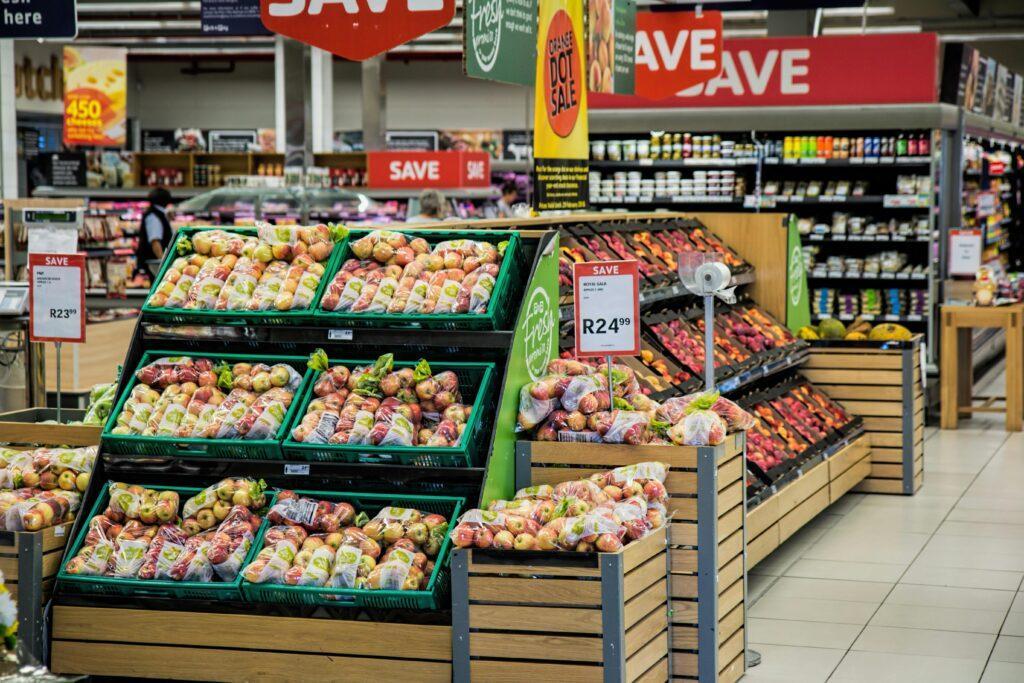Introduction:
In today’s health-conscious society, fresh produce stands as an essential component of a balanced diet, driving consumer demand for high-quality fruits and vegetables. As purveyors of fresh produce, supermarket owners bear the responsibility of meeting this demand while maintaining product freshness and quality. This comprehensive guide aims to equip supermarket owners with advanced strategies and practical tips to optimize fresh produce management, ensuring maximum shelf life and superior quality for their customers.
Optimal Storage Conditions:
Achieving and maintaining optimal storage conditions is fundamental to preserving the freshness and nutritional value of fresh produce. Supermarket owners must meticulously control factors such as temperature, humidity, and air circulation to prolong shelf life and minimize spoilage. Investing in state-of-the-art refrigeration systems equipped with temperature and humidity controls ensures that perishable items remain at the ideal conditions for preservation. Additionally, implementing proper storage practices, such as separating ethylene-producing fruits from ethylene-sensitive ones and regularly cleaning and sanitizing storage areas, helps prevent premature ripening and microbial growth, extending the shelf life of fresh produce and enhancing overall quality.
Regular Inspection and Rotation:
Regular inspection and rotation procedures are indispensable for maintaining product freshness and minimizing waste in the fresh produce department. Supermarket staff should conduct thorough visual inspections of fruits and vegetables upon arrival and throughout their time on display, identifying any signs of spoilage, bruising, or deterioration. Implementing a rigorous rotation schedule, supported by clear labeling and date coding systems, ensures that older inventory is promptly sold before newer arrivals, reducing the risk of product shrinkage and ensuring customers receive the freshest possible produce. By empowering staff to proactively identify and address quality issues, supermarket owners can uphold high standards of freshness and quality across their product offerings.
Quality Packaging Solutions:
Selecting appropriate packaging solutions is critical for preserving the integrity and appeal of fresh produce while safeguarding against environmental factors that can compromise quality. Supermarket owners should prioritize packaging materials that provide adequate protection against physical damage, moisture loss, and exposure to light and air. Vacuum-sealed bags, breathable mesh packaging, and eco-friendly clamshell containers with built-in ventilation systems offer effective solutions for extending shelf life and maintaining product freshness. Moreover, incorporating innovative packaging designs, such as resealable bags and portion-controlled packaging, enhances convenience for customers while reducing food waste and enhancing overall product presentation.
Strategic Merchandising and Display:
Strategic merchandising and display tactics are instrumental in attracting customers’ attention and stimulating sales in the fresh produce department. Supermarket owners should meticulously curate visually stunning displays that showcase the vibrant colors, textures, and variety of available fruits and vegetables. Arranging produce by color, size, and seasonality creates an aesthetically pleasing presentation that entices customers and encourages exploration. Additionally, incorporating themed displays and seasonal promotions, such as “local harvest” or “summer grilling essentials,” capitalizes on consumer trends and creates opportunities for upselling and cross-selling. By leveraging creative merchandising techniques and eye-catching signage, supermarket owners can elevate the shopping experience and drive impulse purchases, ultimately boosting sales and customer satisfaction.
Efficient Supply Chain Management:
Efficient supply chain management is the linchpin of a successful fresh produce operation, ensuring seamless procurement, timely delivery, and optimal inventory management. Supermarket owners should cultivate strategic partnerships with reputable suppliers and distributors who prioritize product quality, reliability, and sustainability. Implementing robust inventory management systems and demand forecasting tools enables supermarket owners to accurately anticipate customer demand, optimize stock levels, and minimize the risk of excess inventory or stockouts. Furthermore, leveraging technology solutions such as blockchain-based traceability platforms and RFID tagging enhances supply chain visibility and transparency, facilitating timely product recalls and quality control measures. By fostering collaboration and innovation throughout the supply chain, supermarket owners can mitigate risks, reduce costs, and deliver a consistent supply of premium-quality produce to their customers.
Staff Training and Education:
Investing in comprehensive staff training and education programs is essential for ensuring that employees possess the knowledge and skills necessary to maintain product quality and deliver exceptional customer service. Supermarket owners should provide ongoing training on topics such as proper handling, storage, and merchandising techniques, empowering staff to handle fresh produce with care and precision. Moreover, offering specialized training on food safety protocols, allergen awareness, and organic certification standards equips employees to address customer inquiries confidently and accurately. Additionally, incentivizing staff participation in industry conferences, workshops, and certification programs fosters a culture of continuous learning and professional development, enhancing employee engagement and morale while elevating the overall quality of service in the fresh produce department.
Customer Engagement and Feedback:
Engaging with customers and soliciting feedback is essential for building trust, loyalty, and brand advocacy in the fresh produce department. Supermarket owners should create opportunities for customer interaction through sampling events, cooking demonstrations, and educational workshops focused on seasonal produce, nutrition, and culinary inspiration. Implementing customer feedback mechanisms, such as surveys, comment cards, or digital feedback platforms, provides valuable insights into product preferences, satisfaction levels, and areas for improvement. Moreover, actively responding to customer inquiries, addressing concerns promptly, and incorporating customer suggestions into product offerings and merchandising decisions demonstrates a commitment to customer-centricity and continuous improvement. By fostering open communication and meaningful engagement with customers, supermarket owners can cultivate lasting relationships, drive loyalty, and differentiate their brand in a competitive marketplace.
Conclusion:
In conclusion, effective fresh produce management is essential for supermarket owners to meet the demands of discerning consumers and drive sustainable growth in the competitive retail landscape. By implementing the advanced strategies and practical tips outlined in this guide – including maintaining optimal storage conditions, conducting regular inspection and rotation, selecting quality packaging solutions, employing strategic merchandising and display tactics, optimizing supply chain management, investing in staff training and education, and engaging with customers to solicit feedback – supermarket owners can position themselves as trusted purveyors of premium-quality produce, delivering exceptional value and satisfaction to their customers while achieving business success and longevity in the dynamic and ever-evolving retail industry.

